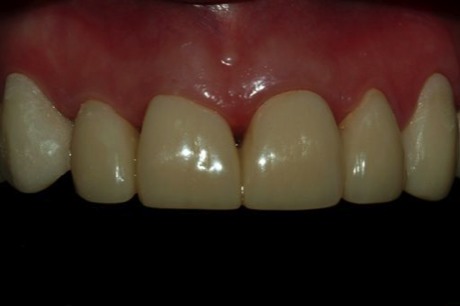
CARLO ZAPPALA'
M.D. - D.D.S.
La protesi dentale è un manufatto, realizzato per mano di specialisti in Odontotecnica, utilizzato per rimpiazzare la dentatura originaria persa o compromessa per motivi funzionali e/o estetici. Si definisce anche protesi dentaria la parte dell’Odontoiatria che si occupa della progettazione e costruzione di protesi, rispettando i seguenti requisiti:
- Funzionalità: riguarda il ristabilimento della corretta masticazione e delle funzioni articolari (apertura, chiusura, lateralità destra-sinistra, protrusione-retrusione e la corretta fonetica).
- Resistenza: la protesi deve resistere al peso del carico masticatorio e all'usura dei liquidi del cavo orale.
- Innocuità: la protesi deve essere costruita con materiali che non siano tossici e non deve presentare "angoli vivi" che potrebbero danneggiare i tessuti.
- Estetica: i denti artificiali devono essere il più possibile simili a quelli naturali e bisogna fare molta attenzione a non alterare il corretto profilo facciale del paziente.
Tali elementi se si ancorano sul dente o radice residuo vengono definiti corone, se poggiano sui denti adiacenti (opportunamente limati) con il fine di ripristinare denti mancanti sono detti ponti, e se sono applicati su impianti inseriti nell'osso sono definiti protesi su impianti. Negli ultimi anni grande importanza ha assunto la realizzazione computer-assistita di protesi fisse con tecnologia CAD/CAM.
Prosthodontics is the dental specialty pertaining to the diagnosis, treatment planning, rehabilitation and maintenance of the oral function, comfort, appearance and health of patients with clinical conditions associated with missing or deficient teeth and/or oral and maxillofacial tissues using biocompatible substitutes.
Fixed prosthodontics can be used to restore single or multiple teeth, spanning areas where teeth have been lost. In general, the main advantages of fixed prosthodontics, when compared to direct restoration, is the superior strength when used in large restorations, and the ability to create an aesthetic looking tooth. As with any dental restoration, principles used to determine the appropriate restoration involves consideration of the materials to be used, extent of tooth destruction, orientation and location of tooth, and condition of neighboring teeth.
A crown is used to cover a tooth and may be commonly referred to as a "cap." Traditionally, the teeth to be crowned are prepared by a dentist, and records are given to a dental technician to construct the prosthesis. The records include models, which are replicas of a patient's teeth, and the impressions used to make these models. There are many different methods of crown fabrication, each using a different material. Some methods are quite similar, and utilize either very similar or identical materials. Crowns may be made of gold or other similar metals, porcelain, or a combination of the two. By the time crowns made of Zirkonia Oxide is being popular due to its high traslucency and durability as opposed to chipping disadvantage of porcelatin crown


